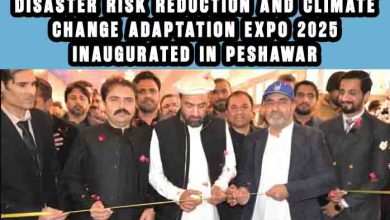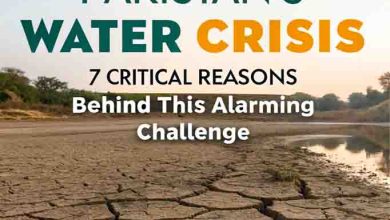5 Urgent Reasons Pakistan Seeks Broader FAO Cooperation for Water and Climate Resilience
Pakistan seeks broader FAO cooperation to urgently boost water governance, climate resilience, and agricultural revival through enhanced FAO-backed reforms, capacity building, precision irrigation and digital agriculture.
Pakistan seeks broader FAO cooperation as the country faces intensifying climate stress, chronic water shortages, and structural weaknesses in agricultural productivity. In back-to-back high-level meetings on Monday, two federal ministers held detailed talks with the visiting FAO delegation led by Lifeng Li, Director of FAO’s Land and Water Division.
The discussions centered on water governance, sustainable land use, climate-resilient agriculture, and institutional capacity, creating momentum for a long-term partnership aimed at agricultural revival and climate adaptation.
Pakistan Seeks Broader FAO Cooperation: What Sparked the Urgency?
Pakistan’s vulnerabilities continue to rise due to:
- Rapidly declining water availability
- Irrigation inefficiencies
- Degraded soil fertility
- Increasing climate shocks
- Weak institutional coordination
- Declining seed performance
These challenges risk undermining national food security, making it essential that Pakistan seeks broader FAO cooperation at a strategic level.
FAO Briefs Musadik Malik on Land, Water and Climate Governance
During the meeting at the Ministry of Climate Change, Dr Musadik Malik received an extensive FAO briefing covering:
- Sustainable land management initiatives
- Ongoing work to curb land degradation
- Efforts to optimise Indus Basin resource use
- Water governance reforms
- The Country Programming Framework 2023–2027
- A demonstration of FAO’s Aqua Portal, built for inter-agency water data sharing
FAO highlighted Pakistan’s growing exposure to catastrophic weather events, escalating water demand, and the need for science-based water modelling.
Green Clusters & Institutional Capacity: Malik’s Reform Vision
Dr Malik emphasised that Pakistan must target areas offering public value, even if they deliver limited private returns, especially:
- Institutional strengthening
- Capacity development
- Framework building
- Public–private collaboration
- Knowledge-transfer mechanisms
He also introduced plans for Green Clusters—zones that support youth-driven climate and environmental technology start-ups. He said that climate financing should not pull funding away from core human development sectors like health and education.
Agriculture Revival: Rana Tanveer Warns of Water Shortages
Later the same day, Federal Minister for National Food Security and Research Rana Tanveer Hussain chaired another meeting with the FAO delegation.
He warned that:
- Water scarcity is worsening
- Irrigation systems are becoming unreliable
- Water quality is deteriorating
- Groundwater tables are falling
- Construction on fertile farmland is accelerating
- Rice yields and other crop outputs are declining
The minister stressed that agriculture cannot survive without urgent, FAO-backed interventions targeting productivity, land conservation, and water efficiency.
Need for Precision Irrigation, Digital Farming & Seed Resilience
Rana Tanveer urged FAO support for:
a) Precision Irrigation
Technologies such as:
- Drip systems
- Laser levelling
- Controlled water release
can dramatically improve water-use efficiency.
b) Digital Agriculture
He recommended using:
- Satellite data
- GIS tools
- Mobile advisory platforms
- Smart irrigation dashboards
to boost monitoring and enhance decision-making.
c) Seed Resilience
Pakistan requires heat-tolerant, flood-tolerant and disease-resistant seed varieties to survive escalating climate pressures.
He requested FAO guidance on modern seed technology, germplasm banks, and climate-smart breeding.
FAO Responds: Advanced Tech, Climate Modelling and Capacity Building
FAO’s Lifeng Li reaffirmed the organisation’s commitment, stating FAO is prepared to support Pakistan by deploying:
- Remote sensing technologies
- Climate modelling systems
- GIS-based natural resource monitoring
- Water governance tools
- Innovative land-use planning
- Training for local institutions
He highlighted that Pakistan needs stronger capacity to access international climate finance, design national projects, and reduce dependence on external consultants.
Joint Roadmap for Future Collaboration
Both ministries and FAO agreed to intensify cooperation in:
✔ Water resource management
including irrigation reforms, groundwater monitoring, and efficiency projects.
✔ Seed development
especially climate-resilient varieties.
✔ Precision agriculture
using data-driven systems for water and land optimisation.
✔ Institutional capacity building
ensuring national ownership of FAO-supported initiatives.
✔ Agricultural research and extension
to strengthen Pakistan’s scientific base and improve farmer support.
FAO and Pakistan will now continue consultations to align technical assistance with national priorities and ensure long-term, sustainable outcomes.
Conclusion
As Pakistan seeks broader FAO cooperation, the dual crisis of water scarcity and climate volatility demands integrated, science-backed solutions. The renewed partnership could prove transformative—accelerating agricultural revival, strengthening water governance, and enhancing national resilience.
By bringing together advanced FAO technologies, national expertise, and long-term institutional reform, Pakistan aims to secure a stronger, more climate-resilient future for its people and its agriculture sector.







